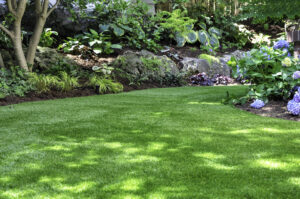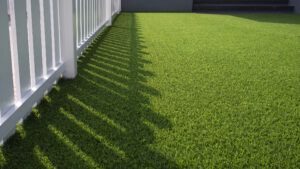For those with a green thumb, watching a garden thrive is pure joy. However, this joy can be short-lived when pests decide to make an appearance. From snails nibbling on your salad greens to grubs undermining your sunflowers, these...

For those with a green thumb, watching a garden thrive is pure joy. However, this joy can be short-lived when pests decide to make an appearance. From snails nibbling on your salad greens to grubs undermining your sunflowers, these little intruders can compromise the health of your entire garden.
Read on to learn easy ways you can keep pests from ruining your garden. Contact All Season Turf at (866) 365-8873 if you are interested in learning more about how artificial turf can be part of the solution.
Prioritize Garden Spacing
One key strategy to dissuade pests from settling into your garden is proper spacing. By ensuring ample space between plant rows, you promote better air circulation. This not only benefits the plants but also denies pests the humid, closely-packed conditions they love. In such a breezy and spacious environment, pests will likely seek more inviting terrains.
Welcome Garden Allies: Beneficial Insects
Instead of seeing every insect as a threat, it’s wise to recognize that many can be valuable allies in your garden. Certain plants, such as yarrow, marigold, and goldenrod, are magnets for these beneficial insects. These insects, ranging from ants and bees to beetles and moths, play a crucial role in managing more harmful pests. For instance, soldier beetles might surprise you when they pop out from your tomato plants, but they’re actually on a mission, feasting on aphids and caterpillars.
Utilize the Power of Herbs
Harnessing the power of specific herbs can greatly aid in keeping pests at bay. This concept, known as companion planting, can both attract beneficial insects and repel harmful pests. Depending on the specific pests you’re trying to combat, you can strategically choose and plant the following herbs:
Rosemary: It wards off cabbage moths, carrot rust flies, and Mexican bean beetles. Basil: This aromatic herb keeps the asparagus beetle and tomato hornworm at bay. Mint: It acts as a repellent for aphids, cabbage moths, and ants. Sage: It’s excellent for deterring cabbage moths and carrot rust flies.Consider Artificial Turf
Introducing artificial turf to your outdoor space can significantly decrease the attractiveness of your yard to pests. Synthetic grass limits the available real estate for pests, ensuring they have fewer places to hide or breed. Moreover, the materials used in making artificial turf, such as nylon and polyethylene, are far from a pest’s preferred meal. Plus, certain types of artificial turfs come with antimicrobial properties, minimizing bacterial growth and subsequently reducing potential food sources for pests.
Embrace Homemade Solutions
You don’t need to have a degree in chemistry to create effective pest repellents. Simple household ingredients can be game-changers when it comes to keeping your garden pest-free:
Cedar: Moths despise the scent of cedar, making cedar blocks or planks a great choice. Citrus: The zesty peels of citrus fruits can keep spiders away. Kitchen Staples: Common ingredients like flour, salt, and beer can prove lethal to many insects. Coffee Grounds: Not just for your morning brew, they can deter mosquitoes, wasps, and bees.Protecting Southern California Gardens Naturally
Your garden, a reflection of both your hard work and Southern California’s vibrant ecosystem, deserves protection. By choosing natural methods, not only do you ensure the health of your plants, but you also contribute to a sustainable environment. If you’re interested in exploring the benefits of artificial turf or need more gardening advice, All Season Turf is here to assist. Reach out to us at (866) 365-8873 today.
The post Safeguarding Your Garden: Natural Defense Against Pests appeared first on All Season Turf.















